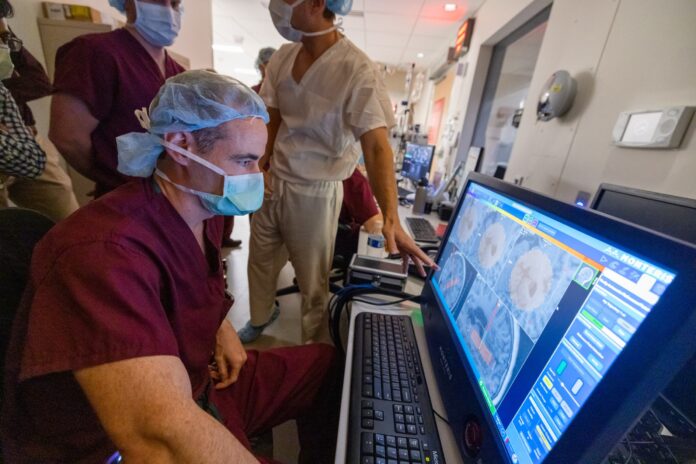
According to a news release from the University of Iowa, recent findings from a study have brought scientists one step closer to understanding SUDEP – Sudden Unexpected Death in Epilepsy – a rare, but fatal complication of epilepsy.
In the U.S., approximately 3,000 people die each year from SUDEP. The exact cause is unknown, but studies point to prolonged apnea that persists following a seizure as a major culprit. Epilepsy that is not regulated with medication or surgery increases the risk of SUDEP.
Neuroscientists at the University of Iowa found that activating a particular section of the amygdala brain region induces prolonged loss of breathing that persists even after a seizure has ended.
“This is the first study to identify a site in the brain that can cause persistent apnea after the seizure ends,” said Brian Dlouhy, UI associate professor of neurosurgery and pediatrics, and senior author on the new study published online Oct. 3 in JCI Insight. “We think this closely resembles the apnea that occurs and has been monitored in SUDEP cases reported in the literature, suggesting that this focal area of the amygdala underlies persistent apnea that can lead to death.”
The research provides fresh understanding into the mechanisms that contribute to this likely cause of SUDEP.
“These new findings are a critical step in developing our understanding of what causes SUDEP and in the development of ways in which to identify those individuals at highest risk and ways to prevent SUDEP,” said Vicky Whittemore, program director at the National Institute of Neurological Disorders and Stroke, part of the National Institutes of Health, which contributed funding for the study.
Brain circuitry provides insight
Electrical stimulation concurrent with functional MRI was a new technique used by the UI team to trace brain networks involved in the persistent post-seizure apnea.
During the experiment, participants were completely unaware that they had stopped breathing, lacking the typical reaction to “air hunger” that stimulated the body to take deep breaths.
“Not only did the stimulation of these specific amygdala sites persistently inhibit breathing, it also persistently inhibited the normal alarm that you would get from not breathing and the typical air hunger that you should experience from elevated carbon dioxide levels,” said Mr. Dlouhy, who also is a member of the Iowa Neuroscience Institute.
“This novel technique allows us to look at causal effects from stimulating one site in the brain to see what else it is doing at other sites. It allows us to look at circuitry,” he added.
The experiments uncovered that stimulating the amygdala in the brain affects the brain stem, which is crucial for controlling breathing and sensing carbon dioxide levels. When breathing stops, increased carbon dioxide levels typically trigger deep breathing. However, the amygdala stimulation blocked this normal response, indicating a disruption in chemo-sensing in these patients. Additionally, the studies revealed changes in activity in another brain region called the insula, which is linked to the sensation of air hunger.
Mr. Dlouhy is excited by the new findings and hopes that they will lead to an increased understanding of SUDEP that may eventually allow physicians to identify patients who are at risk and even lead to clinical trials of treatments to prevent SUDEP from occurring.
“We’re homing in on more of a focused target in the amygdala, which is key if we want to translate this to a therapeutic or preventative strategy,” he said.




